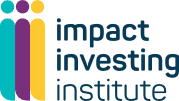Introduction
How to use these resources
Resources in this module

Glossary of terms
We have put together a glossary of terms for impact investing
Filter resources by level:
Objectives and frameworks
-
Achieving the SDGs: the role of Impact Investing

Global Impact Investing Network
Reading time: 25 minutes
The report demonstrates how impact investors can have a role in advancing the UN’s Sustainable Development Goals (SDGs). The report provides 6 case studies of impact investors who have incorporated the SDGs into their investment strategies. It details which SDGs they align with; why they chose this approach; how they measure the impact against the SDGs; and what they believe are the implications of this approach on impact investing. The report also provides specific examples within each case study of impact investing projects carried out with the intention to align with the SDGs.
What the reviewer found helpful:“This report used interesting case studies to bring to life the important intersection between impact investing and the SDGs”
Yinni Hu
Introductory
-
Investing with SDG Outcomes

United Nations Principles for Responsible Investment
Reading time: 25 minutes
The report proposes a five-part framework from the PRI as to how investors can shape real-world outcomes in line with the SDGs The five parts of the framework include how investors can identify outcomes from their investments and operations and set policies and targets to shape outcomes in line with them. Parts 4 and 5 consider the role of the financial system as a whole and the need to work collaboratively with other actors to achieve the SDGs. The report also highlights existing initiatives, tools and data that investors can use
What the reviewer found helpful:“The use of investor examples in the Appendix showcase the theory in practice”
Chloe Mallo
Intermediate
Target beneficiaries – how to identify them and how they can be impacted
-
Focus on beneficiaries

Global Impact Investing Network
Reading time: 40 minutes
GIIN provides an overview of the performance of the various organizations contributing data to the GIIN IRIS1 initiative with a particular focus on the beneficiaries of impact investing. GIIN analyses the spread of beneficiaries across the following themes: beneficiary socioeconomic status, beneficiary demographic characteristics and beneficiary setting (rural and/or urban). GIIN also provides insights on the clients and suppliers spread across selected sectors e.g. financial services and agriculture.
What the reviewer found helpful:“The analysis of the scope of beneficiaries across the various themes.”
Kate Munuka
Intermediate
-
The Good Analyst – Investing for Good

Investing for Good
Reading time: 20 minutes
What is the value to the beneficiaries (or end-users) of the impact you are generating? A practical document that suggests questions that we should ask when considering the beneficiary impact. Would be helpful for organising or sense-checking your own beneficiary impact metrics.
What the reviewer found helpful:“Who benefits and how much? The questions here are a practical starting point of things to consider.”
Chris Cullen
Intermediate
Key social and environmental challenges and how impact investing can channel capital to them address them
-
Financing the SDGs: Impact Investing in Action

Global Impact Investing Network
Reading time: 20 minutes
The report looks at several case studies, showcasing the different ways impact investors are directing capital to the SDGs and how they are integrating the SDGs into their respective investment processes from idea generation and due diligence to investment selection, investment management and exit. The case studies cover a variety of strategies from debt, real assets, private equity and public equity, with investment examples across different regions that target different SDGs. Each case study covers the fund structure, motivations for the investment, SDG integration, investment example, advice for other investors and the outlook for the industry.
What the reviewer found helpful:“The consistent structure of the case studies and how each manager is integrating SDG considerations into the investment process was particularly interesting”
Chloe Mallo
Intermediate
-
Impact Investing Market Map

United Nations Principles for Responsible Investment
Reading time: 8-10 hours
Through this market mapping report, PRI adds clarity to the process of identifying impact investing companies and thematic investments so that asset owners and fund managers can better assess opportunities in the market. The Market Map also contains information about environmental and social thematic areas of impact investments and businesses that, by their nature, intend to contribute to sustainability and the SDGs.
What the reviewer found helpful:“The Market Map targets companies and businesses (in the real economy) that operate in the impact investing field, not just (impact funds) or investment vehicles.”
Kate Munuka
Advanced
Growth drivers and constraints
-
Creating Impact: The Promise of Impact Investing ( Chapters 2.4 and 3, pp63-7)

International Finance Corporation
Reading time: 20 minutes
The chapters cover some of the main challenges and solutions currently facing the impact investing market. Chapter 2.4 covers some of the regulatory barriers that impact investors may face, particularly with regards to fiduciary duty and the balance of considering ESG factors alongside in some cases regulatory requirements to maximise returns. Chapter 3 looks into some of the challenges faced in scaling up the impact investment market and how the industry can address these to attract more capital.
What the reviewer found helpful:“An interesting case is put forward for the role that impact investment can play while meeting fiduciary duty”
Chloe Mallo
Intermediate
-
Growing a culture of impact investing in the UK – final report (pp. 8-30)

Implementation Taskforce
Reading time: 90 minutes
The Task Force identifies a virtuous cycle made up of eight key stakeholders/elements that the task force considers need to act positively together to grow the impact investing market in the UK. The report also provides insight into the roles various stakeholders must play in growing the impact investment market The report also provides an overview of how the Impact Investment Institute was established
What the reviewer found helpful:“The insights on how each stakeholder/element of the virtuous cycle can positively contribute to the growth of the impact investment market.”
Kate Munuka
Intermediate

